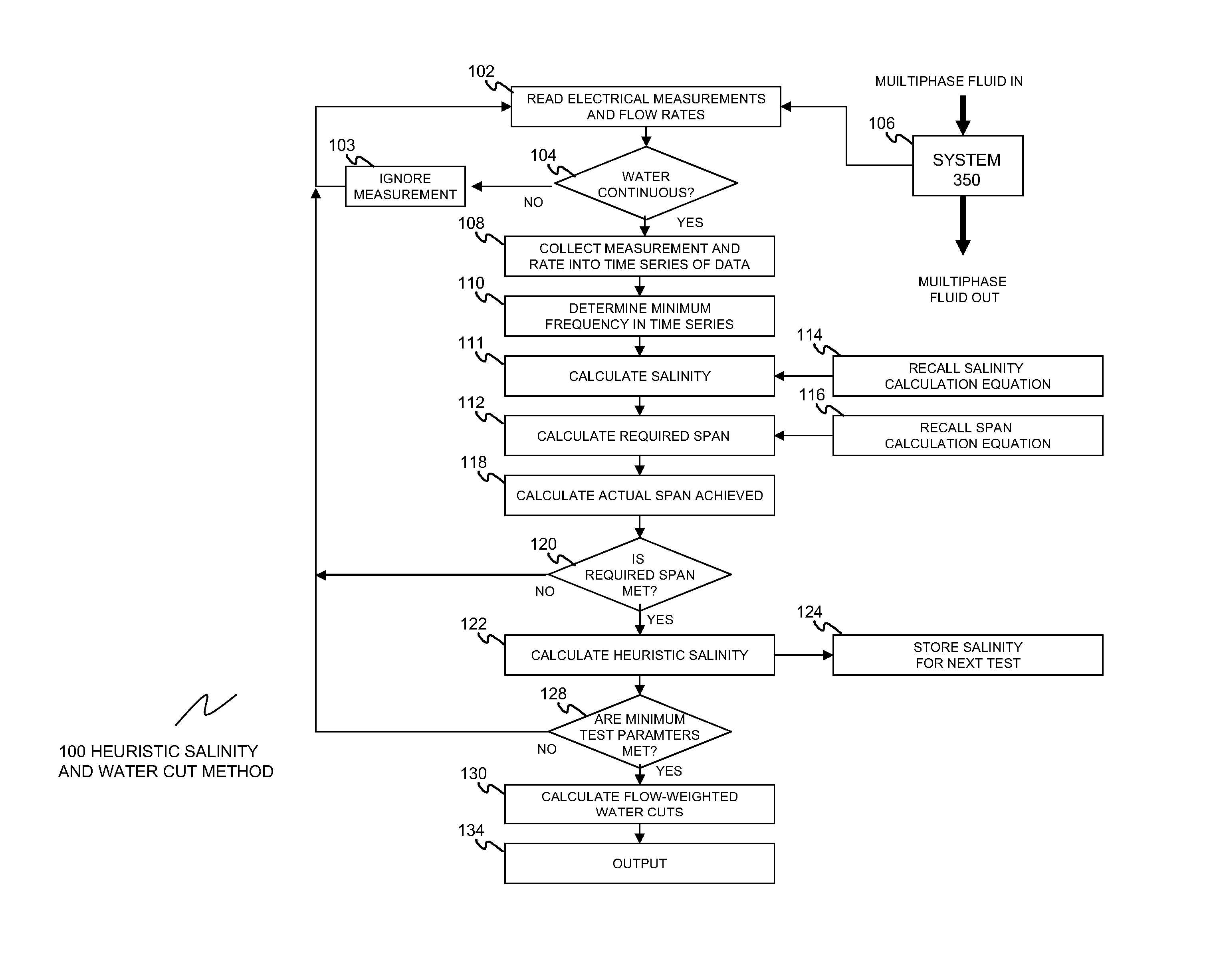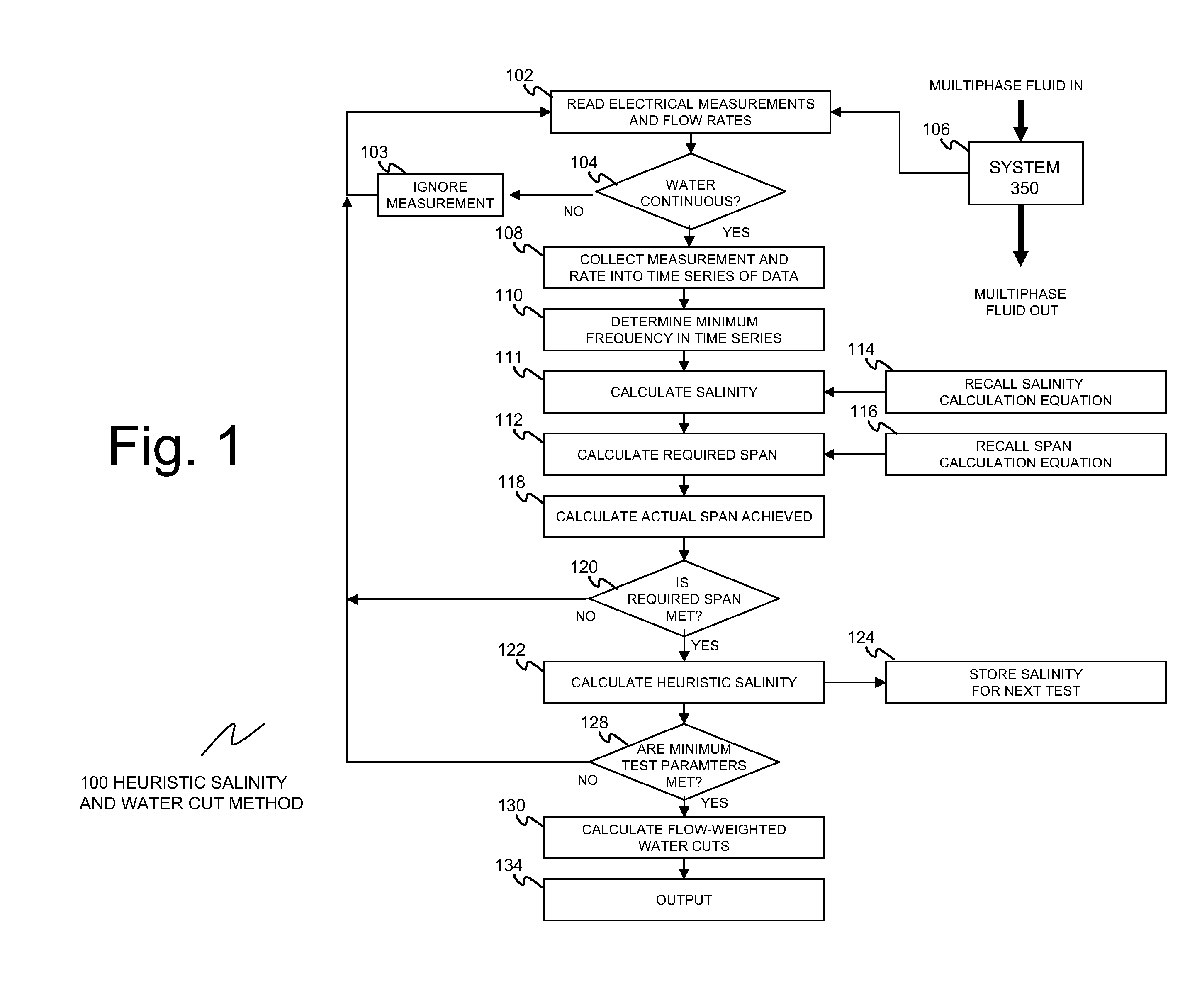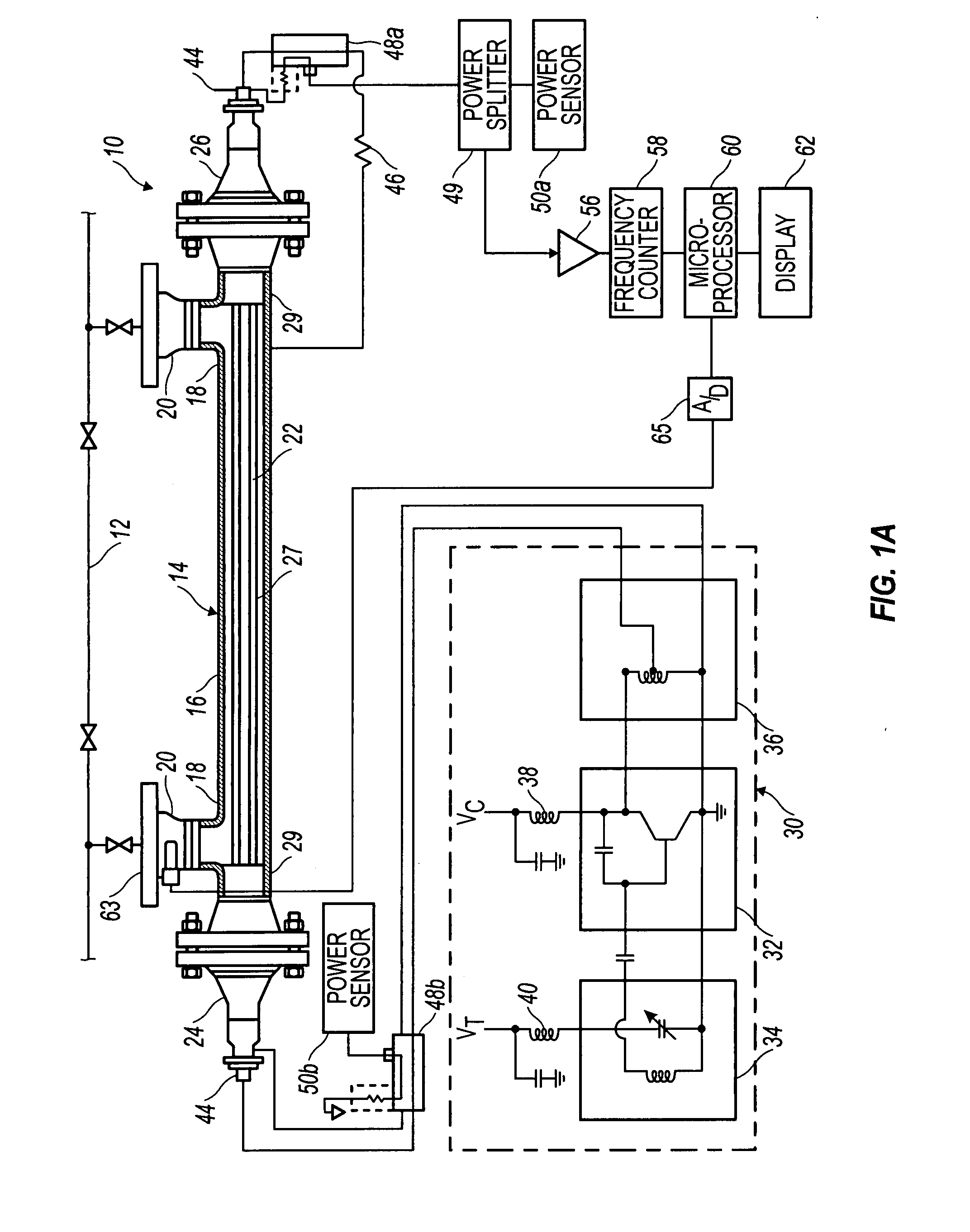High Water Cut Well Measurements Using Heuristic Salinity Determination
a technology of salinity determination and high water cut well, which is applied in the direction of liquid/fluent solid measurement, instruments, machines/engines, etc., can solve the problems of increased cost, increased water exiting from the well, and variation in the amount of water, so as to eliminate the cost, the effect of reducing the risk of contamination
- Summary
- Abstract
- Description
- Claims
- Application Information
AI Technical Summary
Benefits of technology
Problems solved by technology
Method used
Image
Examples
example 1
[0053] According to the present innovations, a water cut measurement experiment was run using a high water cut petroleum production site such as site 200 of FIG. 2. The particular well was known to be a high water cut well operating above 80% WC, but the exact WC % was not known. Crude petroleum oil from the well was directed to a fill and dump metering system, such as system 210. In fill and dump systems, a petroleum flow stream generally enters an un-agitated tank within the system. When a tank in the system is near full, a valve opens to quickly drain the tank, and then closes to repeat the cycle. This fill and dump operation can result in “cyclic gravity settling” wherein the water settles fully or partially to the bottom of the tank. In this experiment, a microwave analyzer system, such as system 350 analyzed the outlet of the cycling fill and dump system and collected a time series of frequency measurements. Note that in another embodiment, system 350 can analyze the output of...
PUM
| Property | Measurement | Unit |
|---|---|---|
| frequency | aaaaa | aaaaa |
| outer diameter | aaaaa | aaaaa |
| outer diameter | aaaaa | aaaaa |
Abstract
Description
Claims
Application Information
 Login to View More
Login to View More - R&D
- Intellectual Property
- Life Sciences
- Materials
- Tech Scout
- Unparalleled Data Quality
- Higher Quality Content
- 60% Fewer Hallucinations
Browse by: Latest US Patents, China's latest patents, Technical Efficacy Thesaurus, Application Domain, Technology Topic, Popular Technical Reports.
© 2025 PatSnap. All rights reserved.Legal|Privacy policy|Modern Slavery Act Transparency Statement|Sitemap|About US| Contact US: help@patsnap.com



